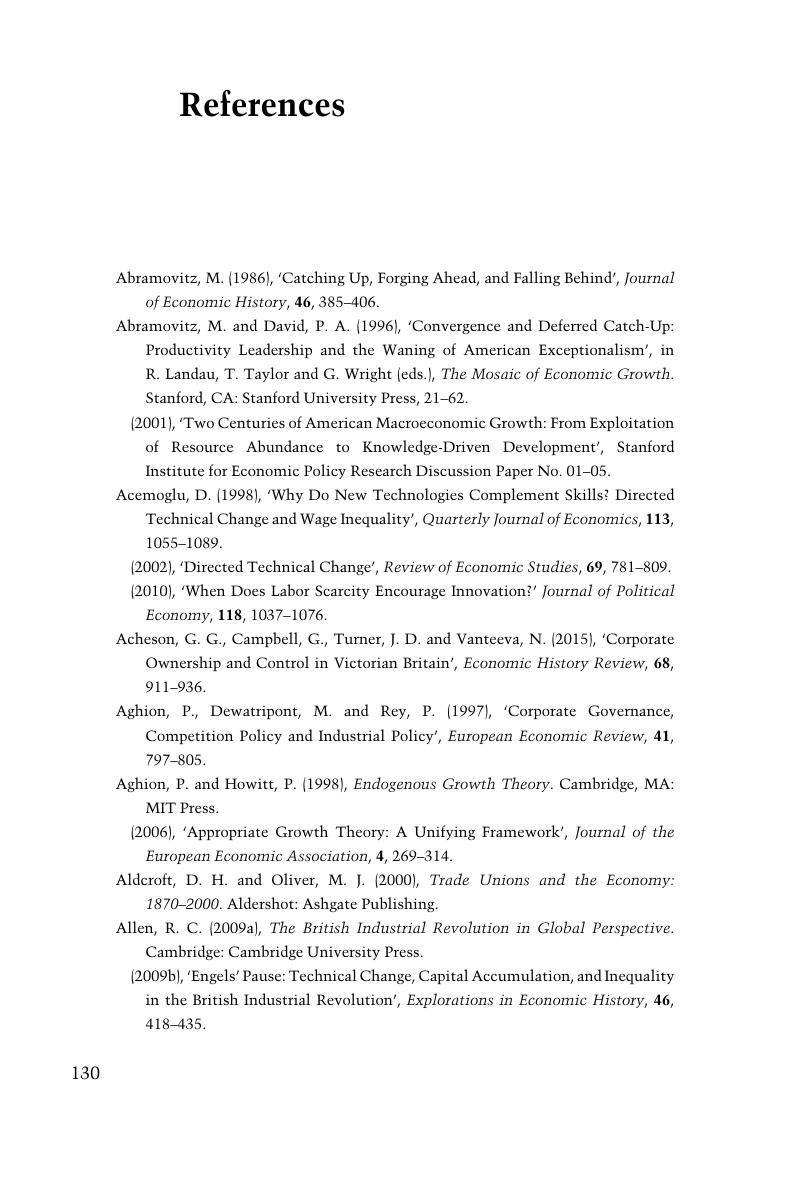 Forging Ahead, Falling Behind and Fighting Back
Forging Ahead, Falling Behind and Fighting Back Book contents
- Forging Ahead, Falling Behind and Fighting Back
- Forging Ahead, Falling Behind and Fighting Back
- Copyright page
- Contents
- Figures and Tables
- Acknowledgements
- 1 Introduction
- 2 The First Industrial Revolution
- 3 American Overtaking
- 4 The Interwar Years: Onwards and Downwards
- 5 Falling Behind in the ‘Golden Age’
- 6 From the Golden Age to the Financial Crisis
- 7 Concluding Comments
- References
- Index
- References
References
Published online by Cambridge University Press: 04 August 2018
- Forging Ahead, Falling Behind and Fighting Back
- Forging Ahead, Falling Behind and Fighting Back
- Copyright page
- Contents
- Figures and Tables
- Acknowledgements
- 1 Introduction
- 2 The First Industrial Revolution
- 3 American Overtaking
- 4 The Interwar Years: Onwards and Downwards
- 5 Falling Behind in the ‘Golden Age’
- 6 From the Golden Age to the Financial Crisis
- 7 Concluding Comments
- References
- Index
- References
Summary

- Type
- Chapter
- Information
- Forging Ahead, Falling Behind and Fighting BackBritish Economic Growth from the Industrial Revolution to the Financial Crisis, pp. 130 - 150Publisher: Cambridge University PressPrint publication year: 2018


